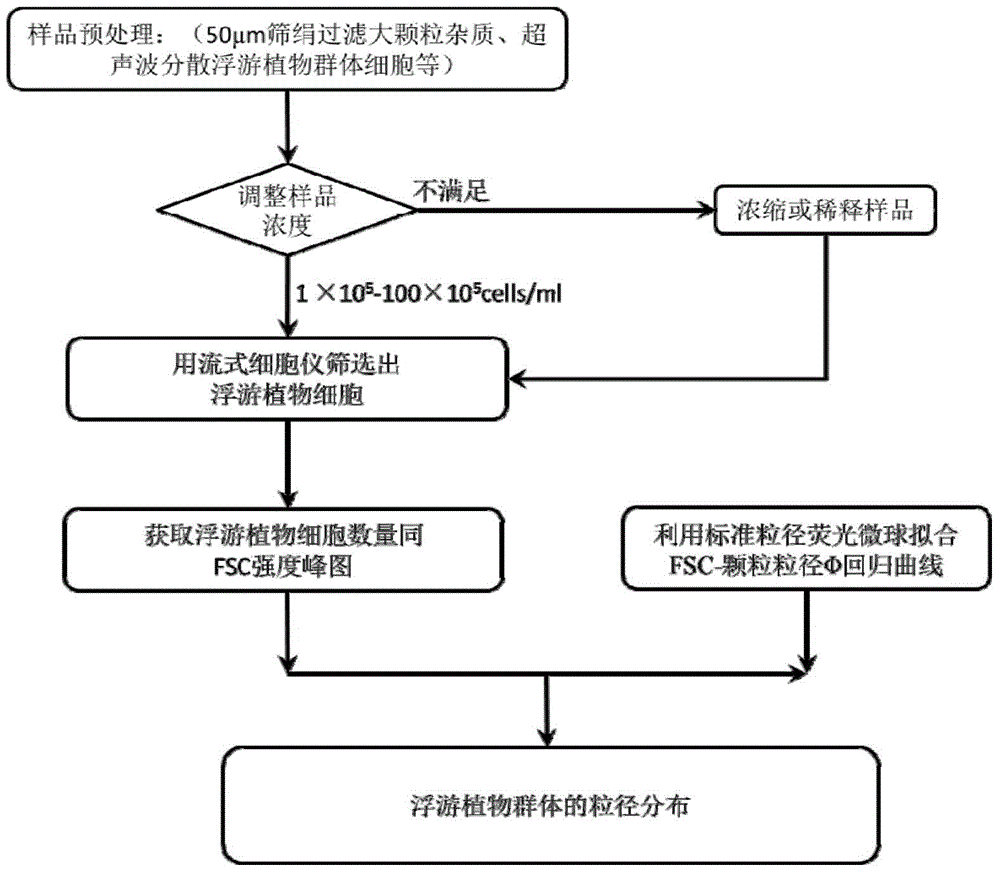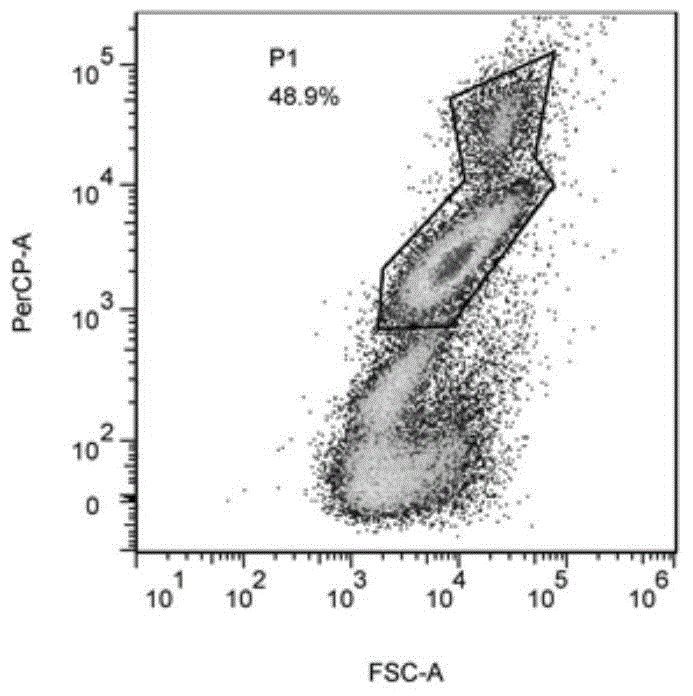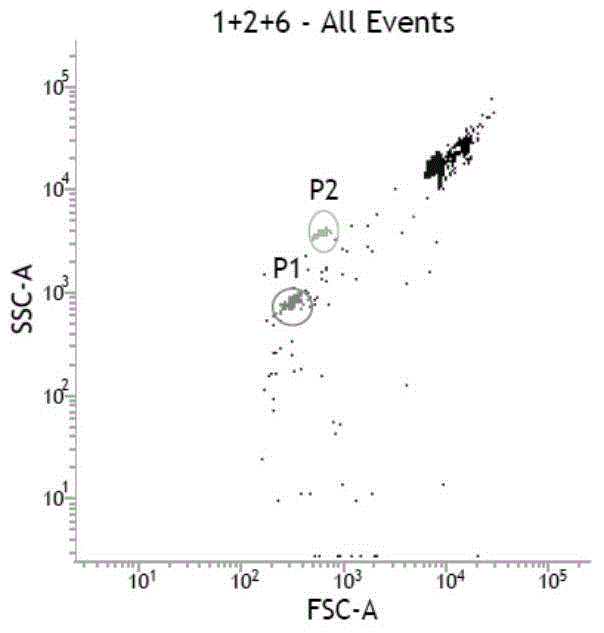Detection and analysis method for cell size distribution of phytoplankton
A technology of phytoplankton and analysis method, which is applied in the field of quickly obtaining the particle size distribution in the statistical sense, can solve the problems of lack of detection and analysis methods, unable to obtain the particle size distribution spectrum of phytoplankton cells, etc., and achieves high classification efficiency and sample demand. The effect of small amount and avoiding interference
- Summary
- Abstract
- Description
- Claims
- Application Information
AI Technical Summary
Problems solved by technology
Method used
Image
Examples
Embodiment 1
[0032] Flow cytometry was first used in the field of biomedical research. When a single cell with a fluorescein marker or an autofluorescent pigment passes through the laser irradiation area, it is excited to generate scattered light and fluorescent signals, and the strength of the forward scattered light (FSC) signal is related to the particle size of the detected cells. The fluorescent signal can be used to distinguish phytoplankton from other impurities such as sediment.
[0033] All phytoplankton contain photosynthetic pigments, which can spontaneously produce fluorescence when excited by laser light, and different pigments have different fluorescence characteristics. If excited by a 488nm laser, chlorophyll a emits red fluorescence (PerCP channel), and phycoerythrin emits orange fluorescence (PE channel). Chlorophyll a is the most basic photosynthetic pigment of phytoplankton, and all phytoplankton contain chlorophyll a. Therefore, using the PerCP channel to detect and ...
Embodiment 2
[0053] Taking a sample of phytoplankton in the backwater area of a certain reservoir as an example, the particle size distribution of phytoplankton in the freshwater sample is detected and analyzed according to the method of the present invention. The operation process and results are as follows:
[0054] 1) Due to the collected fresh water sample concentration and the experimental requirement of 1×10 5 ~100×10 5 The cells / ml are consistent, so the sample is directly tested on the machine after passing through a 50μm sieve.
[0055] 2) In this example, a FACS Verse flow cytometer produced by BD Company was used for the experiment. Take 1ml of the pretreated sample, put it in the flow cytometer, adjust the test conditions and fluorescence compensation according to the method described in the patent, set the total number of stored cells to 10,000, and collect the experimental data. In the PerCP-FSC two-dimensional scatter diagram, the cells containing chlorophyll a (PerCP p...
PUM
 Login to View More
Login to View More Abstract
Description
Claims
Application Information
 Login to View More
Login to View More - R&D
- Intellectual Property
- Life Sciences
- Materials
- Tech Scout
- Unparalleled Data Quality
- Higher Quality Content
- 60% Fewer Hallucinations
Browse by: Latest US Patents, China's latest patents, Technical Efficacy Thesaurus, Application Domain, Technology Topic, Popular Technical Reports.
© 2025 PatSnap. All rights reserved.Legal|Privacy policy|Modern Slavery Act Transparency Statement|Sitemap|About US| Contact US: help@patsnap.com



